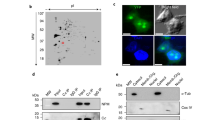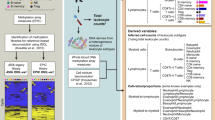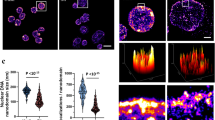Abstract
The unique species of DNA associated with the cytoplasmic membranes of human lymphocytes in culture is synthesized in the nucleus during the S growth phase, and then transported to the plasma membrane.
This is a preview of subscription content, access via your institution
Access options
Similar content being viewed by others
References
Lerner, R. A., Meinke, W., and Goldstein, D. A., Proc. US Nat. Acad. Sci., 68, 1212 (1971).
Penman, S., in Fundamental Techniques in Virology (edit. by Habel, K., and Salsman, N. P.), 35 (Academic Press, New York, 1969).
Hirt, B., J. Mol. Biol., 26, 365 (1967).
Lerner, R. A., and Hodge, L. P., J. Cell Physiol., 77, 265 (1971).
Warren, L., Glick, M. C., and Nass, M. K., J. Cell Physiol., 68, 269 (1966).
Glick, M. C., and Warren, L., Proc. US Nat. Acad. Sci., 63, 563 (1969).
Bell, E., Nature, 224, 326 (1969).
Author information
Authors and Affiliations
Rights and permissions
About this article
Cite this article
HALL, M., MEINKE, W., GOLDSTEIN, D. et al. Synthesis of Cytoplasmic Membrane-associated DNA in Lymphocyte Nucleus. Nature New Biology 234, 227–229 (1971). https://doi.org/10.1038/newbio234227a0
Received:
Revised:
Issue date:
DOI: https://doi.org/10.1038/newbio234227a0
This article is cited by
-
Cytoplasmic DNA is structurally different from nuclear DNA
Naturwissenschaften (1983)
-
I-DNA suppressed by Ethidium Bromide and accumulated with Dactinomycin
Nature New Biology (1972)



